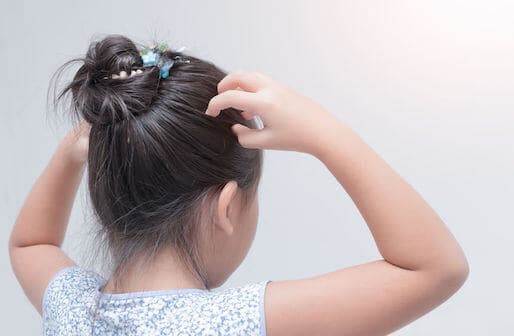Alternative Treatments for Lice

Question
I'd like to try something mild to treat my child's lice. Are there any alternatives to the over-the-counter medications?
Dr. Greene's Answer
Most alternative treatments are untested, but early reports are promising. One method with widespread stories of success is the Vaseline (or mayonnaise) treatment. Cover the infested head liberally in Vaseline. Place a shower cap over the entire head for the night (or an eight-hour period). Then shampoo the Vaseline out of the hair. This treatment is reported to “smother” the lice. The downside of this method is that the Vaseline does not shampoo out of the hair easily — in fact, it usually takes a week or so to get it all out. The upside is that it is not toxic, and from all reports, it seems to work. Washing the hair with dishwashing liquid, which has a degreasing agent in it, may help. I’ve smothered my own hair in mayonnaise (loved the smell), and it came out easily with Dove Ultra dishwashing liquid.
To date, the jury is still out about whether or not these alternative treatments are effective. One research scientist has published several articles stating that Vaseline, mayonnaise, and other oil-based treatments cause the lice to go into a dormant state where they are inactive, but not dead. These dormant lice can later “revive” if they are not removed from the hair shaft. It’s important, when trying this method, to brush out any remaining lice to prevent reinfestation after the Vaseline (or mayo) is washed off.
The Packard Children’s Health Services Pediatric Hotline at Stanford is hailing another popular treatment. It uses regular shampoo and three ingredients that can be found at most health-food stores:
Shampoo (use an inexpensive brand such as Prell — these seem to mix more easily with the oils). 3 tbsp olive oil. 1 tsp tea tree oil. 1 tsp rosemary or eucalyptus oil.
Add the oils to a small amount of shampoo and mix well. Work into hair and leave on for half an hour with a tight-fitting shower cap. This mixture has a strong smell. The fumes may burn the eyes, so don’t lean forward. Wash hair two or three times to get the oil out. Repeat the procedure if necessary.
I’m hearing positive reports about this nontoxic treatment, though to my knowledge, no medical studies have been conducted to establish the efficacy or possible side effects of this treatment.
Meanwhile, several other natural compounds are being studied as possible treatments for head lice. Recently, a group of scientists in Argentina published a study looking at treating head lice with the fruit of the “paraiso” tree (Melia azedarach L.). This is a tree that grows easily all over Argentina, also known as “chinaberry tree,” “Indian lilac,” or “white cedar.” They found that both the extract and the oil of this fruit were able to kill adult head lice and some of the nits (Carpinella et al. Journal of the American Academy of Dermatology, 56(2) 2007).
One of our readers suggested using a hot blow-dryer for 15 minutes, morning and evening, in conjunction with thorough nit combing. Research shows that hot air is at least partially effective in the treatment of head lice (Pediatrics, November 2006). The heat helps to kill the nits and adult lice, but the combing is essential to the process. This type of treatment should not be combined with the over-the-counter treatment since those chemicals are deactivated by the heat of the blow-dryer.


